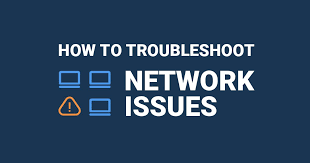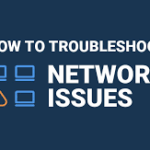How To Troubleshoot Network Issues

Before You Start
Check WiFi Symbol: Look at your device’s status bar. Is the WiFi symbol visible? If not, WiFi might be disabled or you might be in airplane mode.
Basic Device Checks: Ensure your device is not in airplane mode, and that WiFi is turned on. These simple checks can save you a lot of troubleshooting time.
Step 1: Identify the Problem
Determine if the problem is isolated to one device or affects multiple devices. For instance, if the internet works on your phone but not on your computer, the issue likely lies with your computer.
Step 2: Check Physical Connections
Make sure all network cables and power cords are securely plugged in. This includes your modem, router, and any connected devices.
Step 3: Restart Your Network Devices
A simple restart can often resolve connectivity issues. Turn off your modem and router, wait about 30 seconds, and then turn them back on.
Step 4: Verify Network Settings
IP Configuration: Check that your device is set to automatically obtain an IP address.
DNS Settings: Ensure DNS settings are set to be obtained automatically unless you have a specific reason to use custom settings.
Step 5: Check Device Settings
Network Drivers: Update your network drivers to ensure they are not causing connectivity issues.
Specific Symptoms: If the internet works on one device but not another, the issue could be related to device-specific settings or hardware.
Step 6: Run Built-in Network Diagnostics
Utilize your operating system’s troubleshooting tools to diagnose issues:
Windows: Network Troubleshooter in the settings menu.
macOS: Network Diagnostics tool from the WiFi status menu.
Step 7: Isolate the Issue
If possible, connect other devices to your network to determine if the issue is widespread or localized to a single device.
Step 8: Check for Interference
Move your router to a different location to minimize interference from walls, large metal objects, or other electronics like microwaves and cordless phones.
Step 9: Test with Multiple Websites or Services
If some websites are accessible while others are not, this might indicate a DNS issue. Try changing your DNS server to Google (8.8.8.8) or Cloudflare (1.1.1.1).
Step 10: Contact Your ISP
Don’t hesitate to contact your ISP if you’re unable to resolve the issue. Remember, even pros reach out for help sometimes! It’s important to ensure there isn’t a larger issue affecting your service.



